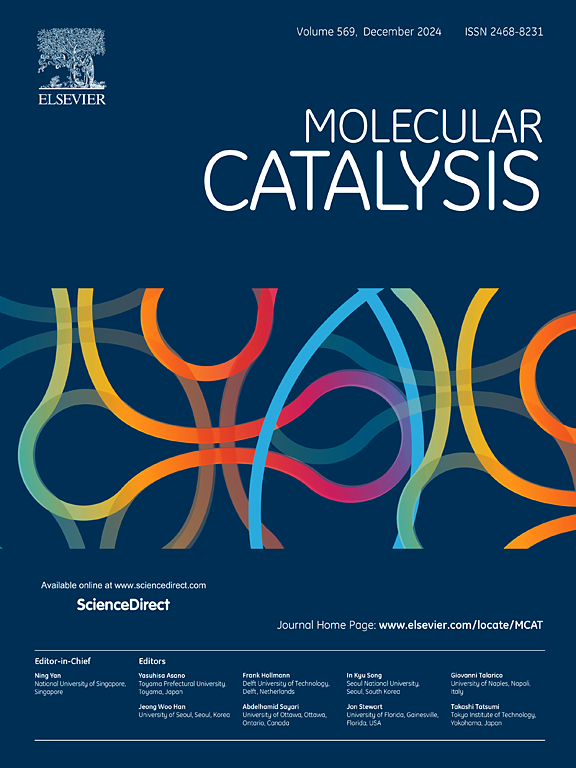Theoretical insight on the delicate regulation of coordination environments for carbon-nitrogen-supported single-atom metals for OER and ORR
IF 3.9
2区 化学
Q2 CHEMISTRY, PHYSICAL
引用次数: 0
Abstract
Carbon-nitrogen-supported single-atom catalysts have significant potential in electrochemistry; however, the real active site TM-Cx-Ny structures are typically complex and varied due to the high-temperature preparation conditions. In order to systematically identify the activity and intrinsic mechanism of these reaction sites, the density-functional theory was employed, whereby different TM-Cx-Ny structures were constructed by quantitative N-atom doping using graphene as a substrate. The adsorption strength of the intermediates and the catalyst activity were effectively regulated by precisely controlling the coordination of the single-atom metals. The findings indicate that the majority of TM-Cx-Ny exhibit robust thermodynamic and electrochemical stability. Among these, Ni-C4, Co-N4, and Rh-N4 demonstrate the most promising OER and ORR activities. By calculating the modulation interval of intermediate adsorption energies from TM-C4 to TM-N4, it was found that metals with different valence electrons exhibit disparate sensitivities to coordination modulation with Group VIII(II) elements (Ne = 9) showing the highest modulation efficiency, which is further substantiated by charge density difference and Bader charge analyses employing Co and Au as illustrative examples. Furthermore, a desirable descriptor, termed φ, has been identified, which correlates well with the intermediate adsorption energy and ηOER/ORR, thus allowing an accurate representation of the activity of various TM-Cx-Ny structures. The catalyst exhibits optimum activity when the φ value is within the range of 120–130. However, when the value of φ exceeds 150, it is no longer reliable for evaluating the activity of the catalyst.

求助全文
约1分钟内获得全文
求助全文
来源期刊

Molecular Catalysis
Chemical Engineering-Process Chemistry and Technology
CiteScore
6.90
自引率
10.90%
发文量
700
审稿时长
40 days
期刊介绍:
Molecular Catalysis publishes full papers that are original, rigorous, and scholarly contributions examining the molecular and atomic aspects of catalytic activation and reaction mechanisms. The fields covered are:
Heterogeneous catalysis including immobilized molecular catalysts
Homogeneous catalysis including organocatalysis, organometallic catalysis and biocatalysis
Photo- and electrochemistry
Theoretical aspects of catalysis analyzed by computational methods
 求助内容:
求助内容: 应助结果提醒方式:
应助结果提醒方式:


